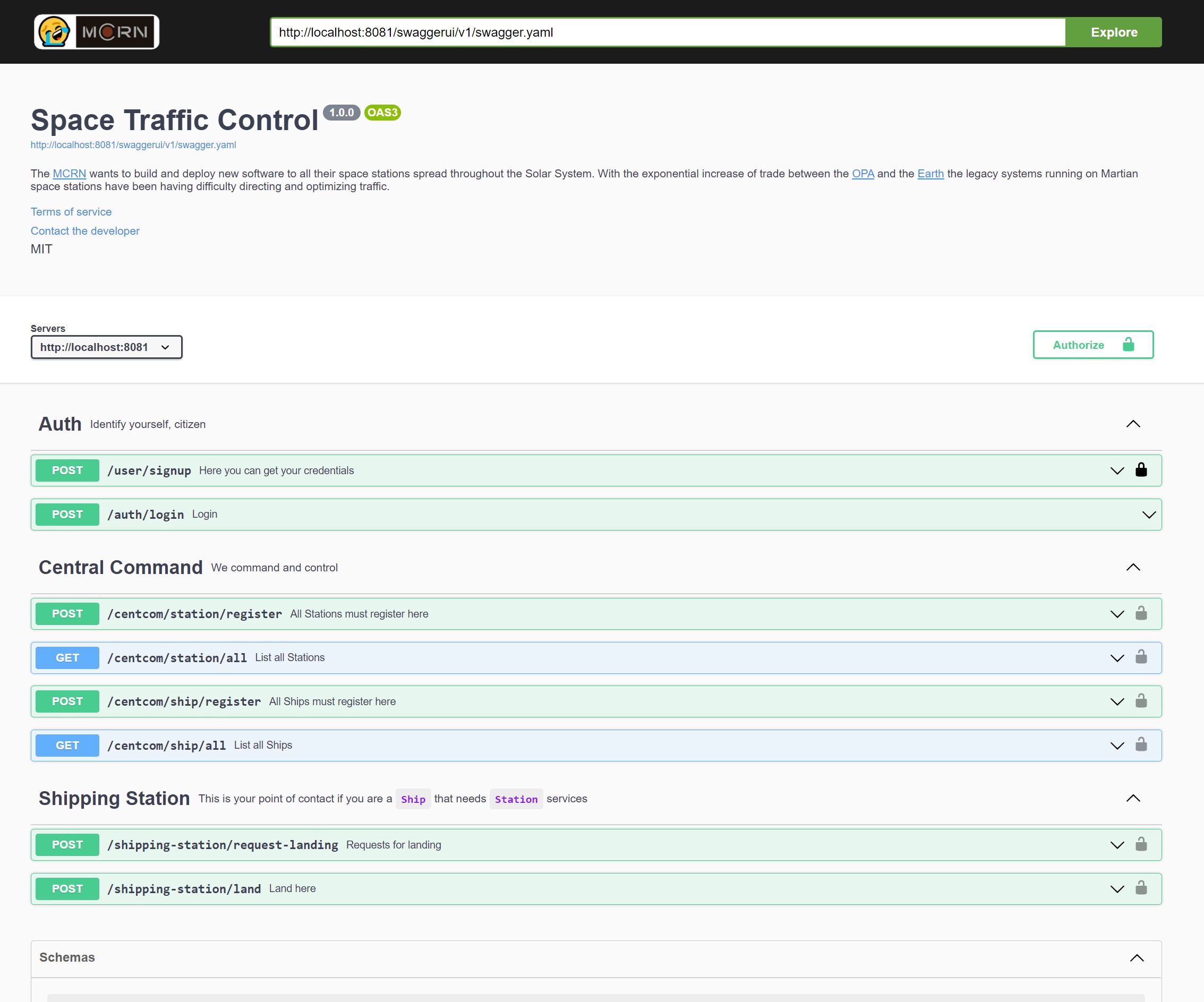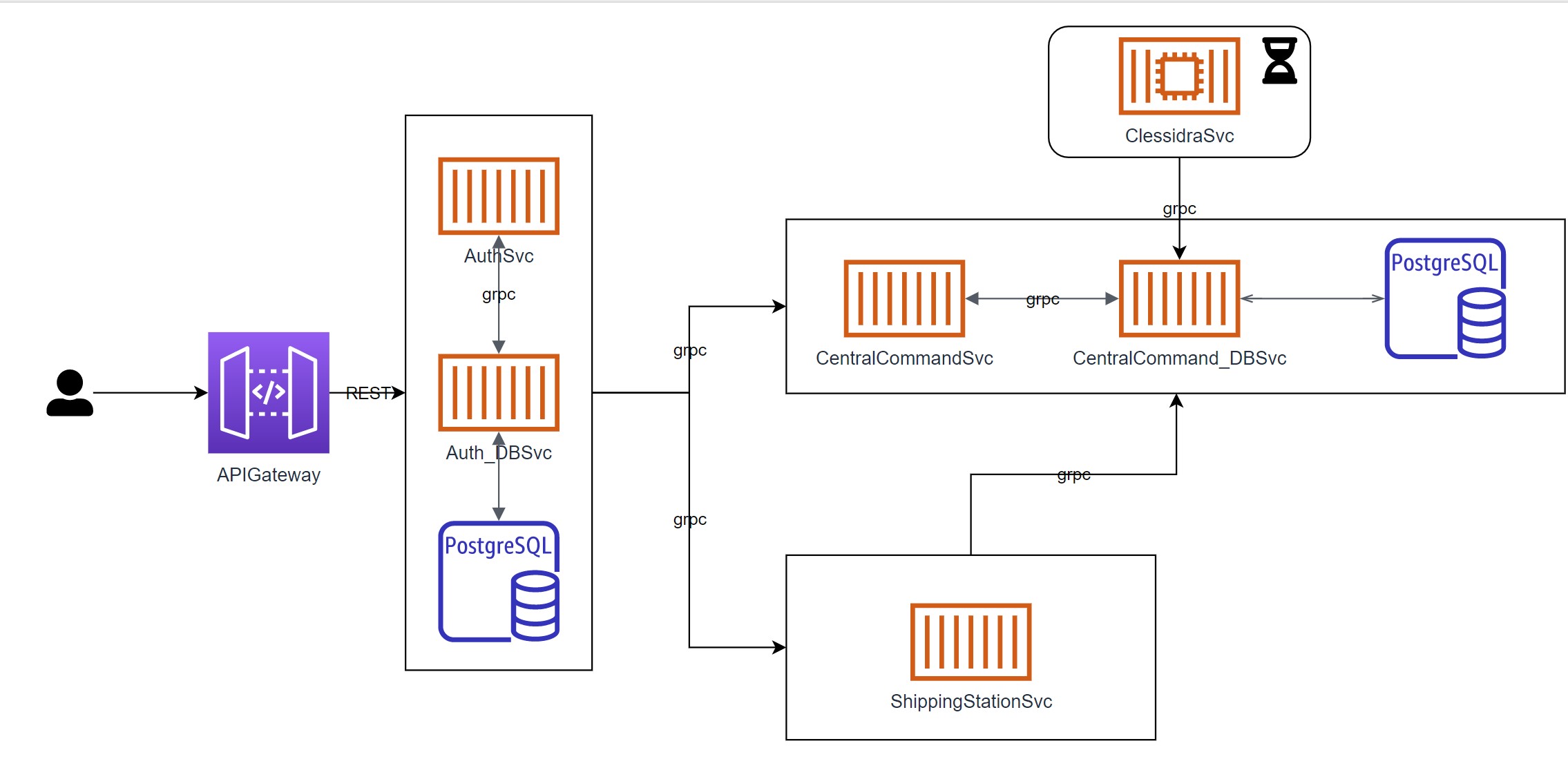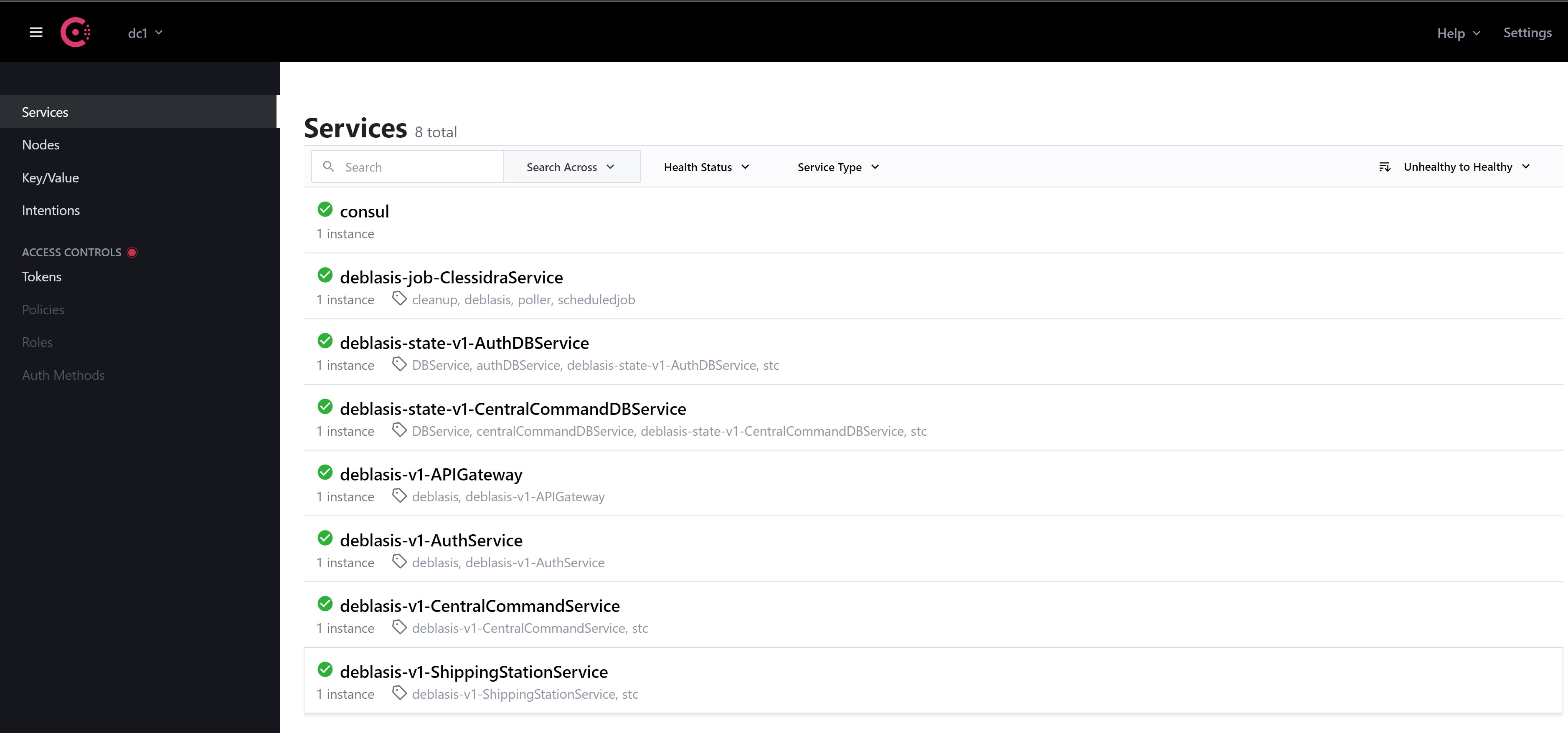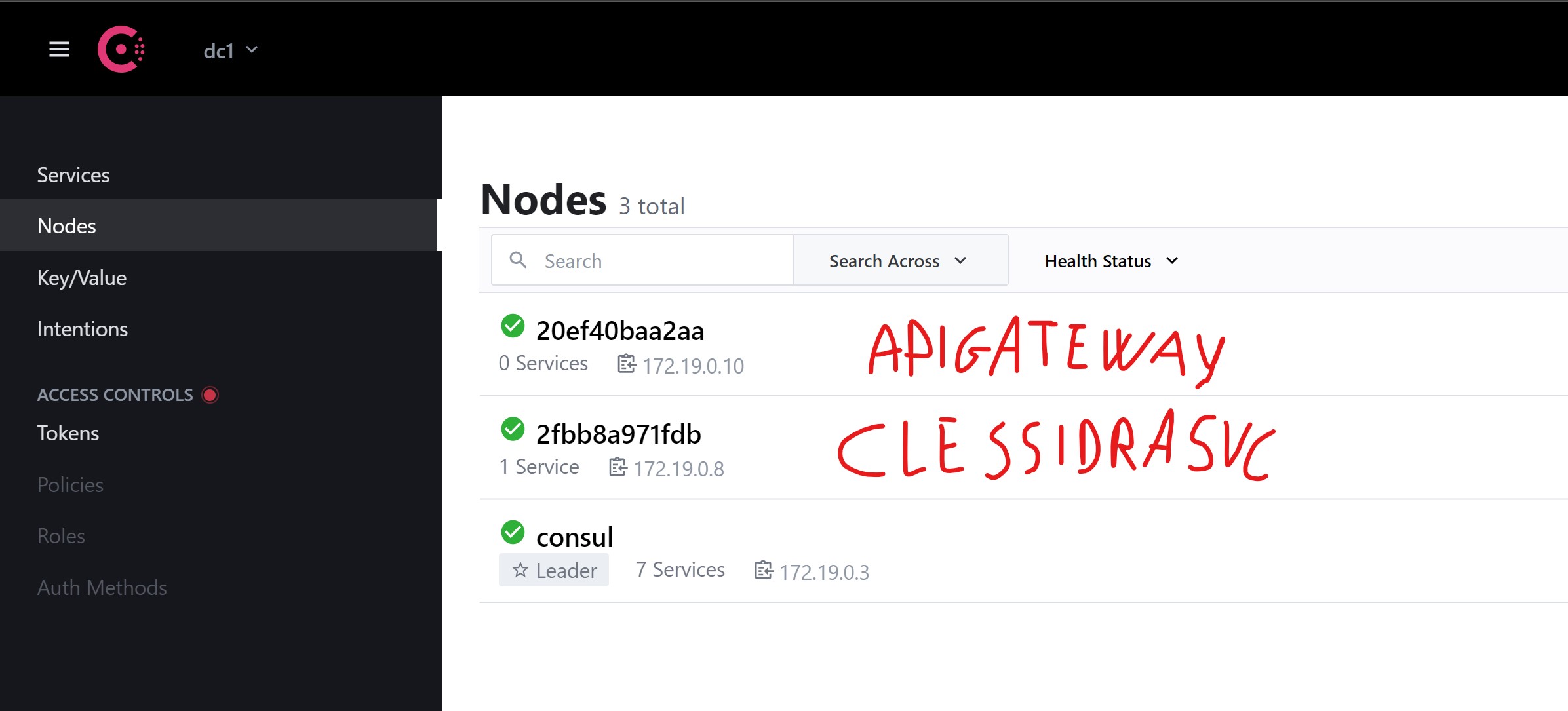This is an implementation of the corresponding Topcoder Challenge
make run-fastthen navigate to http://localhost:8081 and you will be redirected to the swagger UI
 From there you can play with the API
From there you can play with the API
Side note: I used a playful tone, normally I keep it more professional 😉.
In order to get the pre-seeded Command user token, just run the following command, I would never put usernames and password in source control, that's why I am following best practices... 😂 not
curl -X 'POST' \
'http://localhost:8081/auth/login' \
-H 'accept: application/json' \
-H 'Content-Type: application/json' \
-d '{
"username": "deblasis",
"password": "password!"
}'Otherwise follow the instructions below for seeding your own user(s).
The architecture of this implementation is as follows:
There is also a single Consul leader instance and two additional Agents offering DNS for APIGateway and ClessidraSvc.
All services report health status via Grpc to Consul, that, along with the design, enables horizontal scaling.
All http requests requests are served by a front facing API Gateway that implements GRPC-Gateway.
It proxies requests, converts them into GRPC and also takes care of handling authorization headers.
I used JWTs RSA RS256 and I implemented handlers, interceptors and ACL myself instead of using out-of-the-box solutions.
Token expiration is configurable via the jwt.tokenduration key in the AuthService's app.yaml hat is also overridable via environment variable DEBLASIS_JWT_TOKENDURATION supplied obviously to the AuthService container.
It's implemented but disabled by default to simplify testing/verification/debugging
In the backend, the services communicate with each other via GRPC but also expose HTTP endpoints for debugging purposes. Ideally, they should be disabled in a real-world production environment via a feature-flag of some sort.
On the persistence side of things, there are specific microservices for the two databases in this implementation.
CentralCommandDBSvc has a peculiarity which is a feature-flagged Auxiliary GRPC endpoint that serves the purpose of exposing a method that's used to cleanup the database during integration tests.
Nothing special, I used views and functions to fulfill the requirements and I leveraged the multi-model features provided by pg-go to have a very very simple CQRS
There's a small binary that seeds the database using a CSV file and a staging table, when the staging table contains record, the AuthDBSvc picks up the records, hashes the passwords and deletes the table. This happens at service start, which implies that a restart has to be triggered, this is by design for security reasons.
In order to seed the database:
make seed-auth_dbsvcThe input file is located here.
There's also an initial user named deblasis added from the migrations with the same mechanism. This is only for convenience of testing/running the solution. Otherwise there would have been the need for an additional manual seeding step.
CI/CD via Github Actions seeds the database with the additional user in order to test the seeder itself.
The docker/docker compose setup takes advantage of the various features available such as caching, build images and parallel builds.
I applied layering here too, for example having a docker-compose.hostports.yml file used to expose ports in local environment, or a docker-compose.integrationtests.yml that configures the databases to be ephemeral and adds the container that executes E2E tests when it spins up.
The makefile is used as a productivity enhancer, there are targets that are meant to be used only in local development, such as run-fast that builds the binaries on the host in parallel (way faster especially if using multi-core machines) and then copies them into the respective containers.
They can be generated on the host or inside a container for a containerized build depending on the needs. There's also a target in the Makefile to copy the certificates to the host from the containerized builder for debugging purposes.
There's a worker service called ClessidraSvc (Clessidra is Italian for hourglass) that simulates passage of time, making sure that the ships that are supposed to leave, leave their docks and that the reserved docks are freed after a configurable timeout.
The service registers itself with consul via the agent sidecar.
- Docker
- Docker-Compose
- Go 1.11+
make run-fast-integrationtestsSpins up the whole stack and executes E2E tests in a dedicated container with logging enabled at the database level too.
For the same environment but to attach only the the integrationtester run (this is used in CI/CD checks):
make integrationtests-runmake run-fast-integrationtestsTo spin up a version that doesn't expose container ports apart from the entrypoint (ApiGateway)
make run-fastYou can then navigate to http://localhost:8081 to the Swagger UI
-
I introduced the concept of
reservationwhen a ship requests-landing because let's suppose that there's only one dock available, I don't want multiple ships to be offered the same dock. First come first serve. -
When a ship has to land, in the requirements there's no mention of the
dockIdto land to. Since when we request landing we receive adockId(fromdockingStationin the response withcommand=land) I made it compulsory to have alandrequest that requires not only thetimebut also thedockIdto land to. -
I believe this was a fun challenge, I am sorry I didn't see much participation and submissions so far (we are 9d from submission end at the time of writing).
-
Because of the latter reason, I didn't spend too much time cleaning up the code, refactoring, etc. I might do that on Github after the competition is completed.


